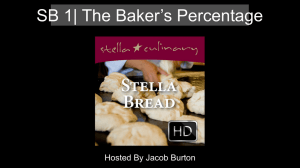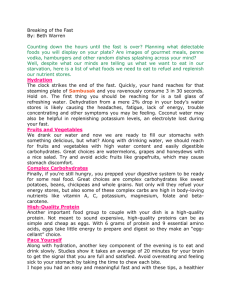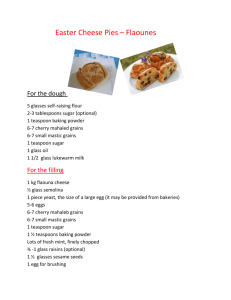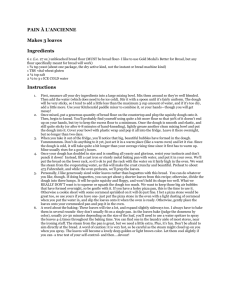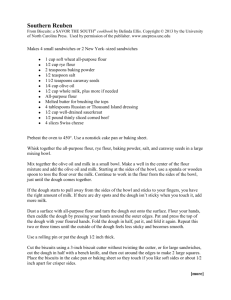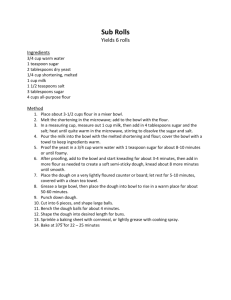Italian Easter: Peppery Egg & Cheese Crescia
advertisement
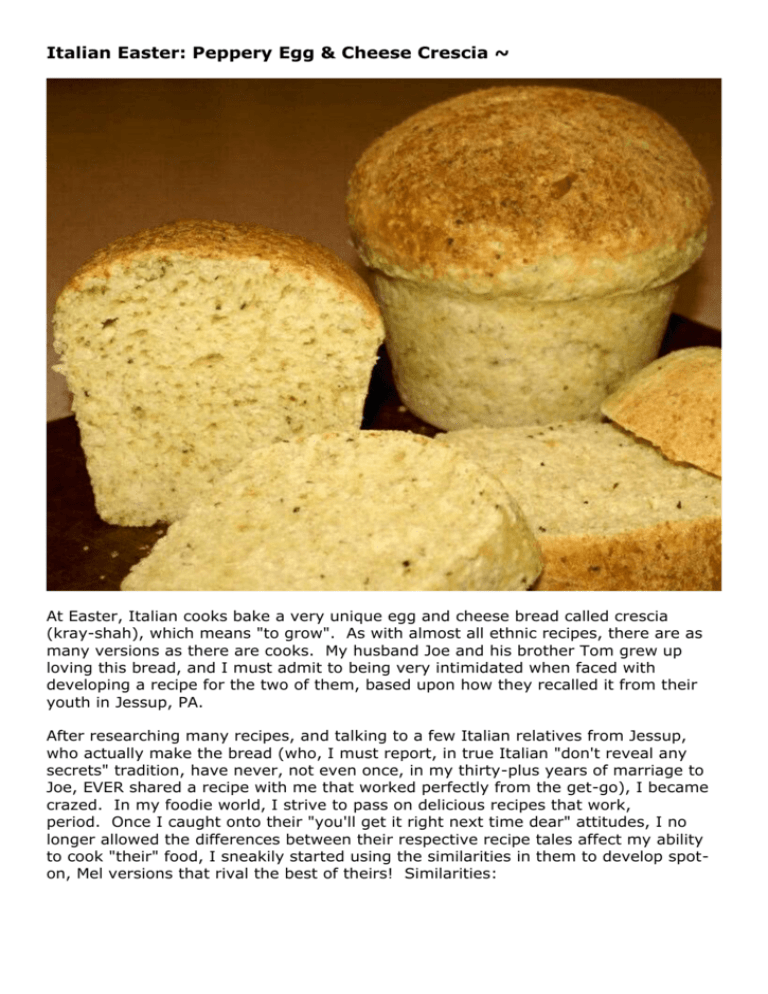
Italian Easter: Peppery Egg & Cheese Crescia ~ At Easter, Italian cooks bake a very unique egg and cheese bread called crescia (kray-shah), which means "to grow". As with almost all ethnic recipes, there are as many versions as there are cooks. My husband Joe and his brother Tom grew up loving this bread, and I must admit to being very intimidated when faced with developing a recipe for the two of them, based upon how they recalled it from their youth in Jessup, PA. After researching many recipes, and talking to a few Italian relatives from Jessup, who actually make the bread (who, I must report, in true Italian "don't reveal any secrets" tradition, have never, not even once, in my thirty-plus years of marriage to Joe, EVER shared a recipe with me that worked perfectly from the get-go), I became crazed. In my foodie world, I strive to pass on delicious recipes that work, period. Once I caught onto their "you'll get it right next time dear" attitudes, I no longer allowed the differences between their respective recipe tales affect my ability to cook "their" food, I sneakily started using the similarities in them to develop spoton, Mel versions that rival the best of theirs! Similarities: In Jessup, PA, crescia is made exclusively with Locatelli cheese, period. Not Parmesan, period. Do not substitute, period. In Jessup, PA, crescia is made with copious amounts of Locatelli cheese and lots of black pepper, period. Crescia is not cheese- and pepper-flavored bread, it is peppery cheese bread, period. In Jessup, PA, crescia is made with eggs and butter. Eggs are used in place of any milk, water or other liquid that typically get added to a bread dough. They prefer big eggs too. When it comes to making crescia, bigger is better, period. A bit about Locatelli cheese: Made in Lazio, Tuscany, and Sardinia, it is the most famous brand of Pecorino Romano cheese sold in the U.S. These three regions of Italy have ideal pastures and specific breeds of sheep that insure consistent flavor. Dating back to Roman times, Locatelli is one of the world's oldest cheeses. In Italian, "Pecorino" means "made from sheep's milk" and "Romano" means "of Roman descent". Locatelli cheese is made from November thru June and it is aged for a minimum of nine months. It is pale yellow in color, hard and dense in texture, strong and sharp in flavor... and a bit salty too! The best crescia dough is very soft and gooey, yet workable: The best advice I received regarding the making of the dough itself came from my husband's ex-mother-in-law Albina (a lovely Italian woman and wonderful Italian cook): The consistency of the mixture is best described as "somewhere between a batter and a dough", "very soft and gooey, yet workable". Adding too much flour, in an attempt to mimic the texture and feel of traditional bread dough, is a mistake, and, the less you work this dough, the better your bread will be. It will take this dough quite a while to rise or "grow" (sometimes up to 2 hours), and, the doubling in size is more important than the actual time it takes! The following surprisingly-simple recipe produces a very-flavorful, moist, heavytextured loaf. Crescia is traditionally grilled or toasted and served with paper-thin slices of Italian specialty meats and cheeses on top of it. While it is delicious just as it is, grilling or toasting it takes it to decadent. That being said, in the Preschutti households, we adore it sliced, toasted and slathered with butter for breakfast too! Ingredients 1 pound Locatelli cheese 6 1/2 cups unbleached, all-purpose four, plus 1/2 cup additional flour for kneading, plus 1/4 cup bench flour 6 packets granulated dry yeast, NOT rapid rise 2 tablespoons sugar 1 teaspoon salt 1 tablespoon coarsely ground black pepper 1 tablespoon white pepper 1/2 pound salted butter (2 sticks) 1 dozen jumbo eggs, at room temperature no-stick cooking spray, or butter and flour, for preparing pans Step 1. Using a large chef's knife, chop the Locatelli cheese into 1"-1 1/2" pieces, adding them to the work bowl of a large-capacity food processor that has been fitted with a steel blade. Using a series of deliberate on-off pulses, grate the cheese to a coarse, yet slightly chunky consistency, about 25. Add the flour, yeast, sugar, salt, black and white pepper to the cheese. Turn on and process, just until combined, about 10-12 seconds. Step 2. In a 2-cup measuring container, melt the butter in the microwave. Set aside. Step 3. In a 1-quart measuring container, whisk the eggs together. Step 4. With motor running, in a thin stream, through the feed tube, add the butter, then the eggs. A large, wet, sticky, ugly ball/mass will begin to form. Step 5. Using the aid of a large spoon and your hands, carefully remove the sticky dough from the processor and place it on a generously floured pastry board. Using the heel of your hand, briefly knead the dough, adding about 1/2 cup of additional flour in small amounts, until dough is smooth and no longer sticks to your hands, about 1 minute. Step 6. You will have 80 ounces of dough. Using a large chef's knife and a kitchen scale as a measure, divide the dough into 8 equal parts. Note: I like to quickly cut the dough into 8 parts and then use my kitchen scale to weigh and adjust each piece accordingly. Step 7. You have two choices: Form each piece of dough into a smooth oval-shaped loaf or a round-shaped loaf. Place each one in a mini, nonstick loaf pan that has been sprayed with no-stick cooking spray, or a conventional mini-loaf pan that has been buttered and floured. Rectangular or round? This is a choice you'll just have to make for yourself! Step 8. Completely cover the loaves with a kitchen towel (not a damp one) and set aside to let rise, in a warm kitchen, until they are nicely risen and have domed tops, about 2 hours. Step 9. Bake loaves, all at once, on center rack of preheated 350 degree oven, 1820 minutes. Loaves will be honey-colored and have a hollow sound when tapped with the knuckle of your index finger. Remove from oven and cool in pans 5-10 minutes prior to removing from pans to cool completely on a cooling rack: Italian Easter: Peppery Egg & Cheese Crescia: Recipe yields 8 mini-loaves, 6-8 slices per loaf, 3-4 servings per loaf. Special Equipment List: cutting board; chef's knife; large-capacity food processor; 2cup measuring container; 1-quart measuring container; whisk; large spoon; large pastry board; sharp paring knife; kitchen scale; 8, 5"L x 2 1/2"W x 2"D, rectangular mini-loaf pans, or 8, 2-cup round mini-loaf pans; large white flour sack-type towel; 17 1/2" x 2 1/2" baking pan; parchment paper; cooling rack Cook's Note: The traditional shape for crescia is round, probably because a round-shaped loaf pan encourages a higher rise, or "grow". That being said, when it comes time to slice and toast or grill the bread, rectangular-shaped loaves, in my kitchen, are much more practical. I make miniloaves because crescia freezes beautifully, which allows me to have it on-hand all year for wonderful individual-sized grilled cheese sandwiches and appetizers! "We are all in this food world together." ~ Melanie Preschutti (Recipe, Commentary and Photos courtesy of Melanie's Kitchen/Copyright 2012)
